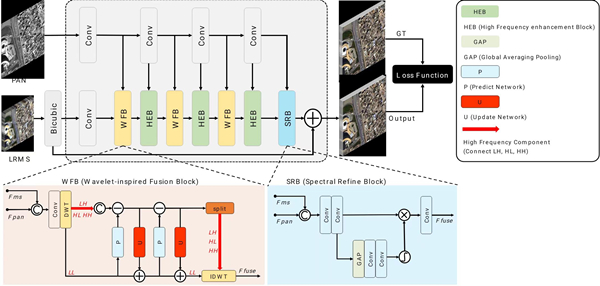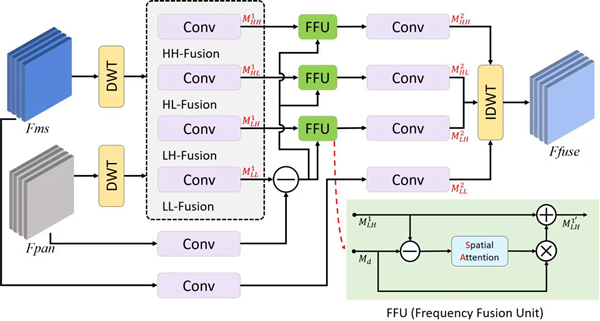
A team of researchers, led by Professor XIE Chengjun and Associate Professor Zhang Jie from Hefei Institutes of Physical Science (HFIPS), Chinese Academy of Sciences (CAS), recently introduced an innovative pan-sharpening methodology aimed at enhancing remote sensing images.
Their findings were published in IEEE Transactions on Geoscience and Remote Sensing (IEEE TGRS).
Pan sharpening is an important technology in the fusion of multi-source remote sensing images, which addresses the limitations between spatial and spectral resolutions in optical remote sensing satellites. However, current spatial domain-based pan-sharpening techniques encounter challenges in precisely restoring intricate image textures, while frequency domain approaches struggle to establish effective interactions with spatial domains, consequently affecting the overall quality of the generated images
In this research, the team introduced an noval pan-sharpening method based on the enhancement of wavelet high-frequency information.
This approach took advantage of the complicated interaction of spatial frequencies as well as the frequency division capabilities inherent in wavelet transform. It achieved efficient image fusion by integrating two key modules: a wavelet-inspired fusion block and a high-frequency enhancement block.
This method demonstrated outstanding performance through extensive experimentation across various publicly available datasets, including World View-II and World View-III. It performed particularly well in peak signal-to-noise ratio (PSNR) and Structural Similarity (SSIM).
This research provided fresh insights into the field of remote sensing image processing, demonstrating the effectiveness of integrating wavelet transforms into neural networks.

The structure of our proposed network (Image by ZHANG Jie)

The structure of High Frequency Enhancement Block (Image by ZHANG Jie)